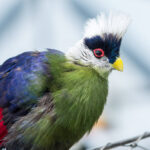Anyone who has hummingbird feeders in their yard probably noticed the same behavior from hummingbirds: they can be surprisingly aggressive.
With their tiny size and flashy feathers, these birds can seem cute and harmless, but they can be fiercely territorial when it comes to their food sources. So why are hummingbirds so aggressive?
Let’s take a look at 11 reasons why they act this way.
1. Male Hummingbirds Are Protecting Their Food Sources
Male hummingbirds in particular are very protective of their food sources.
Despite their small size, hummingbirds need to consume lots of food all day because their bodies run in a constant state of overdrive. They need access to all the food they can get.
When a male hummingbird finds an ideal food source, he will aggressively protect it. He will allow his mate access to the food, but if another male comes into the territory, that’s when tempers fly.
2. Female Hummingbirds Are Protecting Their Nests
Male hummingbirds tend to be the most aggressive, but female hummingbirds are not above fighting. They are most territorial around their nesting sites.
When other hummingbirds – male or female – get too close to their nests, the female hummingbirds will show their angry side and viciously run them off.
3. Hummingbirds Are Solitary Birds
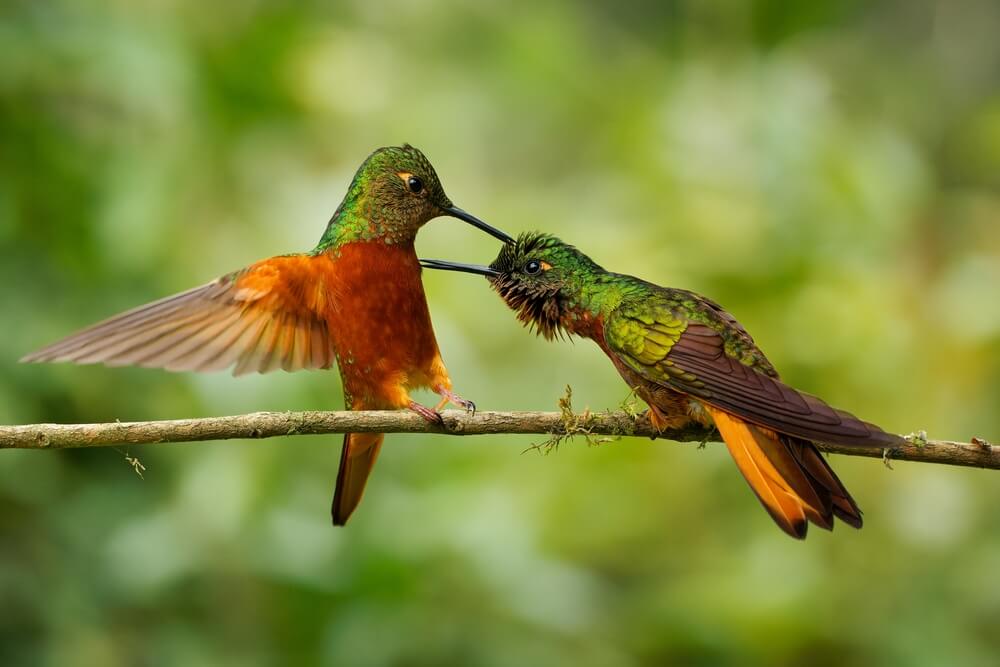
Unlike some other bird species, hummingbirds are solitary birds.
Even when they migrate, they do so as solo travelers, not in flocks. Therefore, hummingbirds don’t have a complex social order.
Hummingbirds generally don’t have any other birds to share their food or nesting sites with. This further motivates them to be aggressive when it comes to protecting their territories.
4. Could It Be The Sugar Rush?
Hummingbirds have one of the highest metabolic rates relative to their size out of any animal on the planet. They must eat nearly constantly in order to keep their blood sugar levels high enough to fuel their high-revving bodies.
Did you know that hummingbirds’ metabolism is 77 times higher than that of humans?
The nectar they drink from flowers and the sugar water you provide them in hummingbird feeders gives the hummingbirds a constant sugar rush. With so much sugar coursing through their tiny bodies, it’s no wonder they are cranky and mean.
5. Hummingbirds Are Designed For Battle
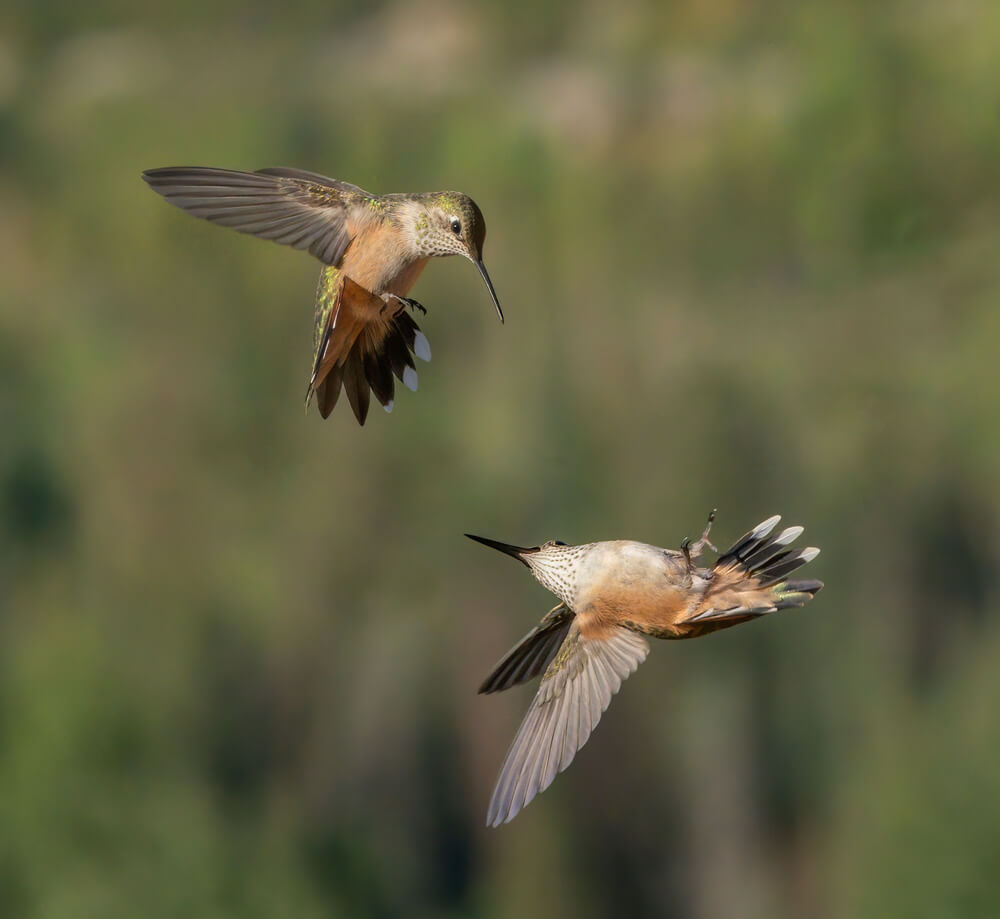
Despite their diminutive size, hummingbirds are built for battle.
Their anatomy and physical characteristics make them excellent fighters. They have excellent eyesight and hearing so they can detect an interloper in their territory and take immediate action.
Hummingbirds are quick, agile flyers. They can also hover in place and fly backwards – a trait unique to hummingbirds. They also use their sharp claws and long, dagger-like beaks as weapons.
6. They Have Even More Fight Moves
There are even more weapons in the hummingbirds’ arsenal.
In the heat of battle, they will use sound to demonstrate aggression. Lastly, they will slam their bodies into their enemies much like a hockey player shoulder-chucks an opponent into the boards.
To prepare for battle, a hummingbird will puff up its feathers to make itself look larger and more intimidating.
There are often casualties in hummingbird wars. Usually, one of the birds backs down, but occasionally, there is bloodshed.
7. Hummingbird Mating Habits Lead To Aggression
Hummingbirds are also very aggressive when it comes to mating.
Males will often fight over the same female and will even go so far as to attack other males in order to defend their claim over her. This is because they need to ensure that they are the ones that can mate and produce offspring.
In addition, males will often defend their territories in order to attract potential mates. This is because a large and well-defended territory is seen as a sign of strength and can make them more attractive to potential mates.
8. Hummingbirds Don’t Like To Share
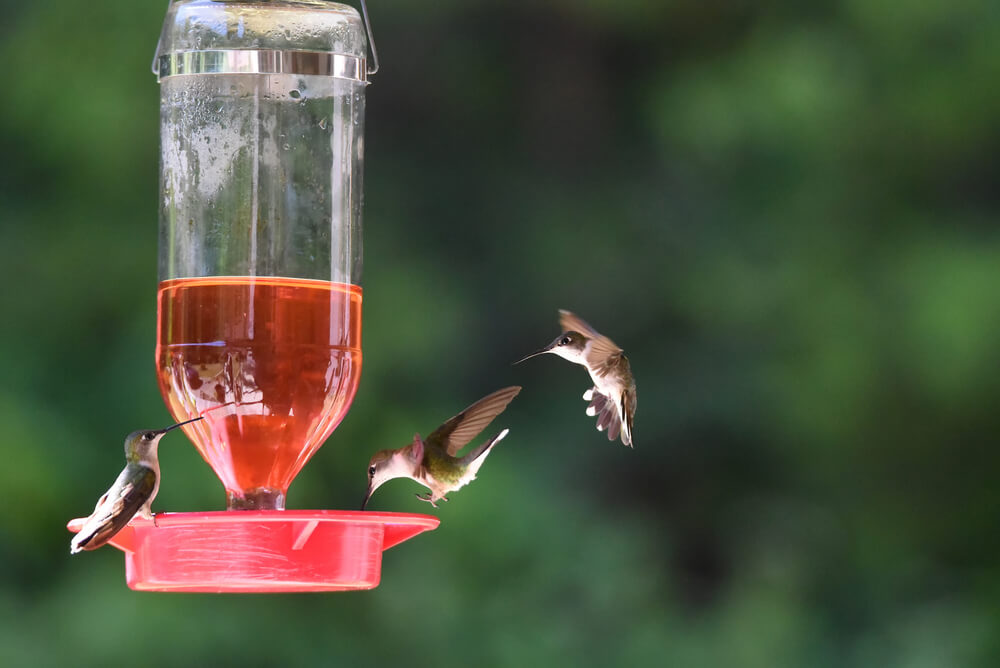
The hummingbird feeders that you hang in your backyard have multiple openings so, in theory, several hummingbirds can feed at once. But hummingbirds don’t like to share.
A male hummingbird won’t approach the feeder if another male is present, or he will risk a fight.
Hummingbirds have their favorite feeders, favorite drink holes, and favorite perches. They can be quite territorial about their favorites and will get angry if another hummingbird drinks out of their favorite feeder hole.
9. Aggression Is A Survival Tactic
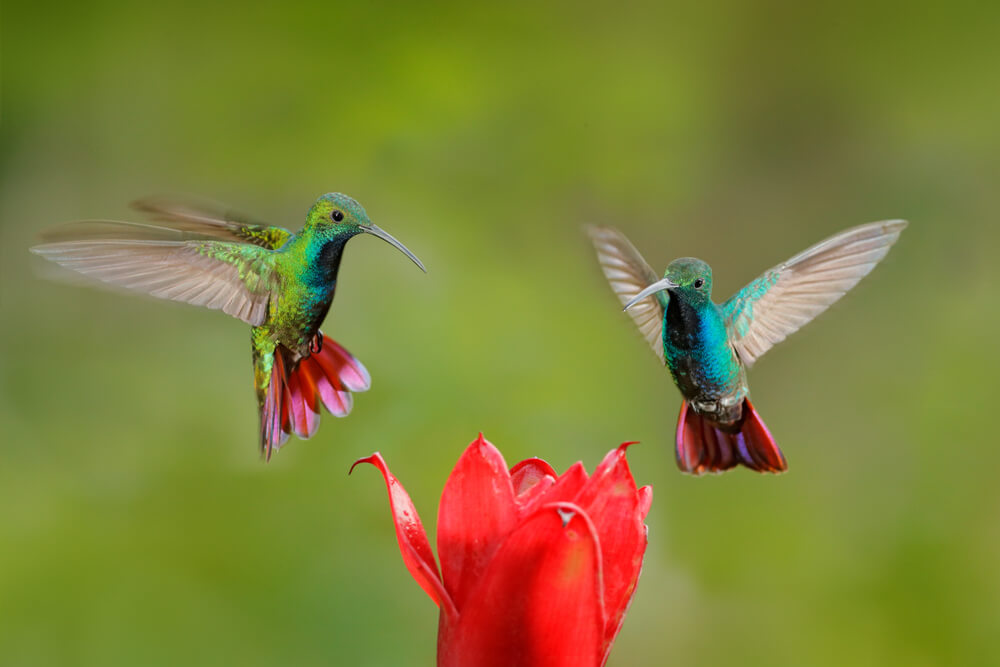
Hummingbirds’ aggressive behavior can also be seen as a survival tactic. By being aggressive and defending their food sources, they are able to get the most out of them and ensure their survival.
Male hummingbirds’ aggressive mating behavior is also part of their survival tactics. By fighting and defending their territories, they are able to pass on their genes.
10. It Could Be That Time Of The Year
Researchers and bird watchers have noticed that some species of hummingbirds are much more aggressive and angry in the spring, but they seem to mellow out by fall.
For example, the male member of one species of hummingbird may bullishly keep all other hummingbirds away from his favorite feeder during mating season.
Later in the year, however, that same male hummingbird will allow other hummingbirds to use the feeder without angry outbursts and displays of aggression.
11. Fighting Is In Their History And Their DNA

Some species of hummingbirds are more aggressive than others.
The rufous hummingbird and the ruby-throated hummingbird are both known for their dominant, bullying behaviors. They will fight off other hummingbird species and even larger birds, like blue jays, because this behavior is instinctual.
An interesting side note: tiny, sparkling hummingbirds display such fierce aggression and bravery that hummingbirds are part of the myths and folklore of indigenous cultures in North, Central, and South America.
The ancient Aztec people believed that warriors killed in battle would be resurrected as hummingbirds.
Conclusion
Hummingbirds’ aggressive behavior can seem intimidating, but it is actually a sign of their intelligence and adaptability. By being aggressive and defending their food sources, they are able to get the most out of the available food and ensure their own survival.
In addition, their aggressive behavior when it comes to mating is also an adaptive behavior, as it allows them to pass on their genes. The next time you see a hummingbird being aggressive or acting like a bully, remember that it is only doing what it needs to do to survive in the wild.








